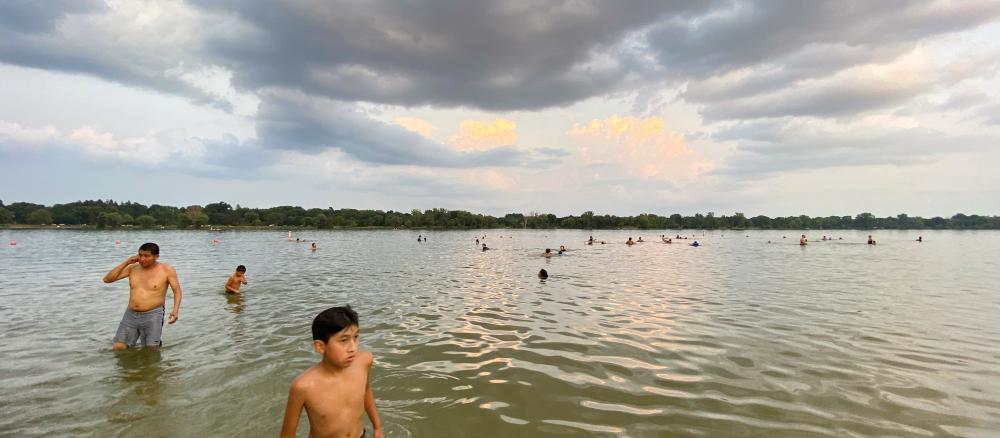The Minnesota Pollution Control Agency (MPCA) recently released the results of an effort to gauge the health of the state’s major recreational lakes. In the first statewide study of its kind, 75% of Minnesota lakes met water quality standards for recreation such as swimming and wading.
While most lakes are good shape, 25% of those studied need lower levels of phosphorus and algae that can be harmful to some aquatic species and hinder recreation.
“The good news is that many Minnesota lakes continue to be some of the highest quality lakes in the nation,” says Katrina Kessler, MPCA assistant commissioner for water policy and agriculture. “The bad news is that some of our lakes continue to suffer from several water quality problems.”
The statistics change by region: Lakes are generally healthy in the northeast, where forests and wetlands are more prevalent, with lake conditions getting worse moving to the south and west, where cropland and urban development are dominant.
For example, in the Rainy Lake Watershed in northern Minnesota, all the lakes studied met water quality standards, while in the Blue Earth River Watershed in southern Minnesota, none of the lakes did. Standards vary by region. In other words, scientists don’t expect lakes in the south to meet the same standards as in the north.
The Clean Water Fund has made a tremendous difference in determining the condition of Minnesota lakes. This ongoing study is funded by the Clean Water Fund, which is derived from the Legacy Amendment sales tax approved by voters in 2008.
“Thanks to the Clean Water Fund, we understand the water quality of lakes across the state," Kessler says. "More importantly, Clean Water Funds are being used to develop restoration and protection strategies to improve and maintain water quality to benefit Minnesotans today and into the future. In concert with local partners, the MPCA has completed strategy reports for 69 of our 80 watersheds, with the rest on track for wrapping up in 2022."
Since passage of the Clean Water Legacy Act, the MPCA has followed a watershed approach to studying water resources. The Clean Water Funds make it possible to monitor lakes (and river and streams) throughout an average of eight watersheds each year. The MPCA and partners follow these general steps:
- Monitor waters for levels of several pollutants such as nutrients, sediment, bacteria and chloride.
- Compare the monitoring data to standards to determine whether lakes support uses such as swimming and fishing. Lakes meeting standards warrant protection strategies to maintain their quality. Lakes not meeting standards go on the state’s Impaired Waters List and require restoration strategies.
- Develop watershed restoration and protection strategies (WRAPS) with partners. These strategies inform implementation decisions by local partners, serving as a guide about where best to invest in water quality improvement.
- Return to each watershed every 10 years to see if strategies are working to maintain or improve lakes and streams.
“Minnesota is blessed with a tremendous number of lakes," Kessler says. "We could not begin to check the conditions of major lakes without our valued partners, particularly those at the local level like soil and water conservation districts, watershed management organizations, watershed districts, and lake associations.
“With their continued partnership and ongoing support from the Clean Water Fund, we are committed to monitoring the lakes that Minnesotans value for recreation. In coordination with the Minnesota Department of Natural Resources and the Board of Water and Soil Resources, we will keep working to restore impaired lakes and protect healthy ones.”
State of lakes
By region:
- Northern region: Of the lakes assessed, about 95% fully support the standards for recreation, based on phosphorus and algae levels.
- Central region is a transition area: 54% of lakes assessed fully support the standards.
- Southern region: Only 14% of the lakes assessed fully support the standards.
By the numbers:
- Minnesota has 12,740 lakes covering almost 3 million acres. The DNR and other government units manage 2,862 public accesses on Minnesota lakes. Lakes open to the public for recreation are the priority for monitoring.
- Before the state’s watershed approach funded by the Clean Water Fund, the MPCA and partners had monitored and assessed 759 lakes covering about 941,521 acres.
- After the watershed approach, that number jumped 350% to 2,670 lakes monitored and assessed. Those lakes cover about 1.9 million acres.
For more information
